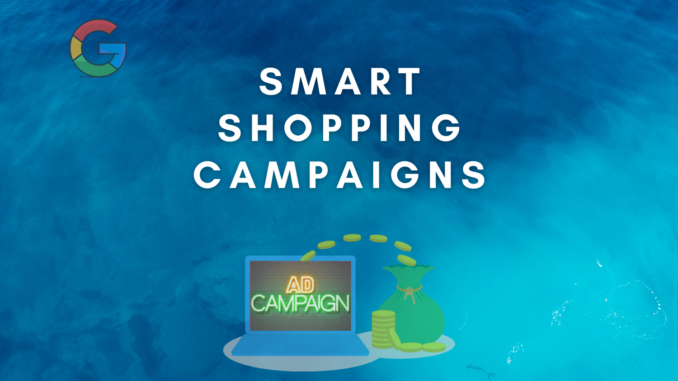
Google has been a leader in the world of advertising, and Google’s smart shopping campaigns have become one of the main features of their AdWords campaigns.
Those of you who know a thing or two about google campaigns know how complex and time consuming they can be.
However, smart shopping simplifies your campaigns by auto managing your ads with Google’s learning machine and algorithm.
According to Google, when smart shopping was first released, advertisers who used it for their ads drove over 20% more conversion value at a similar cost compared to manually managed ads.
Although they seem to have had their own fair share of success, like many things, they come with their own disadvantages.
In this article, we are going to take you through advantages and the disadvantages of smart campaigns and when you should use them.
How Do Smart Shopping Campaigns Operate?
When it comes to smart campaigns, your ads are created in a similar way to standard ads. The ads are built through your product feed in your merchant centre account.
The biggest difference is the learning machine and the automation that is offered with smart ads.
All the technology that is used to create, optimise and run these ads means the less you will have to do.
Once your ads have been created, Google, through their own AI, uses Machine Learning to decide which ad they display, to who and when.
It is referred to as smart because Google’s objective is to display your ads to the right people at the correct time, in the right places.
Their main goal is to help you to reach your target profits and return your ad spent.
With that in mind, Google claims to target viewers that are more likely to convert and spend money.
If the ads work and reach their potential, they can increase your click-through rate, which ultimately increases your sales conversion rates too.
One of the major difference in smart shopping campaigns is the fact that you cannot limit the networks that your ads are displayed on.
All of your ads will be shown on SERPs, Youtube, Gmail, and across Google Display networks automatically.
When it comes to bidding, you have two options to choose from. One is maximising your value and the other is target return on ad spend.
Maximising your value will focus on your revenue and you have limited control over your budget.
You have more control over your budget and how it is spent if you select the return on ad spend.
The Advantages
The Disadvantages
Should You Use Smart Shopping Campaigns?
When it comes to selecting a campaign type, it all really depends on how much you know about creating shopping ads. Smart shopping campaigns are beginner-friendly and easy to use.
You do not have to be a computer genius to figure out how to set up a smart shopping campaign. It offers everyone the ability to set up their own ads quickly to gain exposure over multiple channels with just a few clicks.
This is most beneficial to those of you who have small businesses or may not have the budget to spend on advertising companies.
Smart campaigns could also work for those of you who have been working on a campaign that has not been performing well, especially those of you who have yet to make the ROAS. It is worth a try to see if the smart campaign can potentially do what you wanted to do.
Smart shopping was first launched in May 2018 and it has been serving what it claimed to do. It is a powerful tool for beginners to use and set up ads quickly.
However, in terms of improvement, not much has happened. But, with Google only becoming smarter every day, is it only a matter of time for smart shopping to become smarter?
As the Google learning machine becomes more advanced and the algorithm improves, there is a possibility that eventually smart campaigns might dominate standard campaigns in the near future.
If you prefer to be in the driver’s seat then opt for a standard campaign. Unfortunately, the lack of transparency on Google’s side is an issue when it comes to smart campaigns. Google is hiding valuable information from its users without any valid reasons.

Leave a Reply